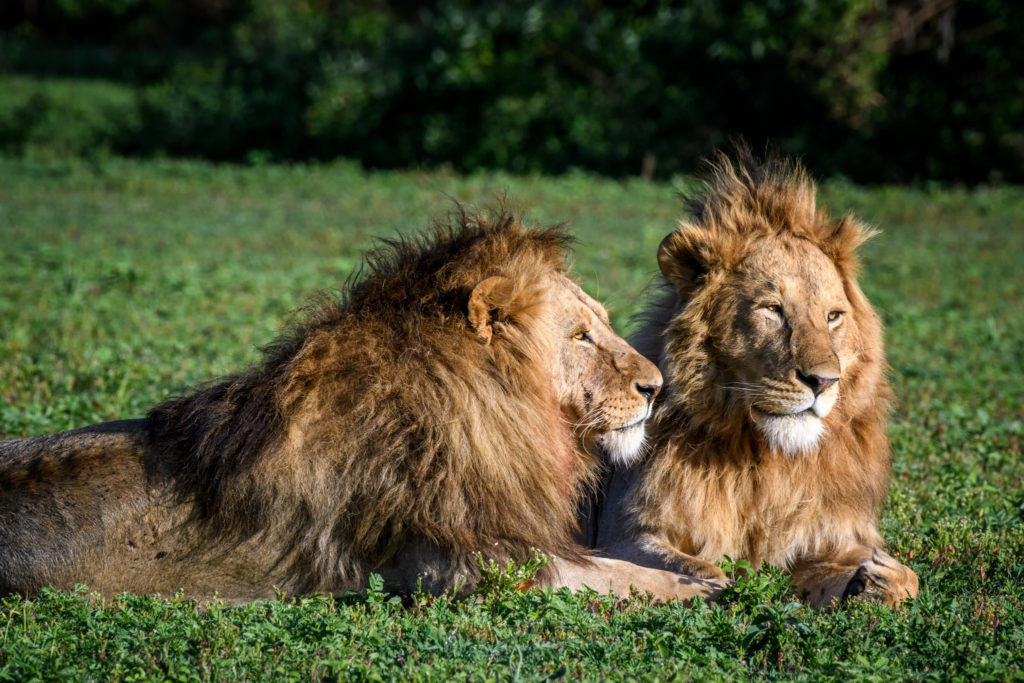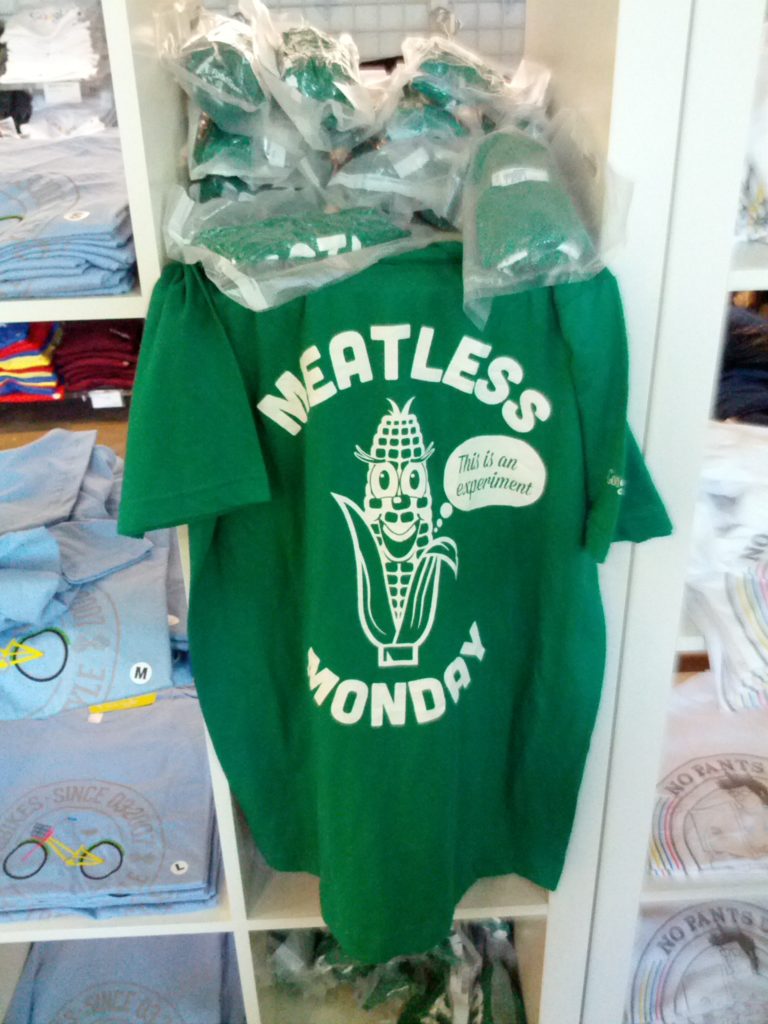The Ngorongoro crater in Tanzania formed when an ancient volcano erupted a long time ago. The crater is 600 meters deep and covers an area of 260 square kilometers. It is home to a very dense population of Masai lions. The crater is a natural enclosure: the lions don’t leave the crater, and it is very rare that a lion enters from the outside. Thus, there are few new bloodlines to enter the local gene pool, and the lion population is significantly inbred. The result is that the lions suffer from several diseases, and the population is not thriving.

Two male lions in the Ngorongoro Crater, Tanzania, East Africa. Image credit Diana Robinson, CC BY-SA 3.0.
While this is, like all comparisons, imperfect, I use the situation in the Ngorongoro crater to make a point about the vegan movement and vegan advocacy. Inbreeding can also happen with ideologies and ideas. Vegan ideas too can be inbred. Many of us spend a lot of our time in our vegan craters. We post in vegan Facebook groups, go to vegan potlucks, do activism with other vegans. Our environment echoes our thoughts; social media algorithms keep showing our posts to the same people who keep liking them and sharing them among the same people (hence the description of the internet as an echo chamber). When our thinking and our thoughts are shaped mainly through interaction with other vegans, without enough confrontation with the “outside,” our ideas may become “inbred,” and are not ideally fit to spread and reproduce and influence outsiders.
In order to increase our own population, we need to get out of our natural habitat, out our own Ngorongoro crater, out of the vegan echo chambers, and talk to other people. We need to listen to their ideas, let them collide with ours, and let them fertilize our own thinking. Many of us are already doing that, but I believe we could do a lot better still. Most of all, we need to know what non-vegans think of our messages, and how they perceive us. We need to be open-minded to listen to their concerns and objections, and not just write them off as laziness, egoism or prejudice. And we need to listen to the ideas of potential allies, even if they don’t agree with our objective one hundred percent.

Listening to others who we may disagree with doesn’t mean we have to give up on our convictions, but it can mean we learn from others or gain new allies. Image credit Britt Reints, CC BY-SA 3.0.
We can also be more open at a more structural level. We may need to open up our meetings more to people from the outside. I have heard instances of vegan conferences where non-vegans were not welcome as speakers. As if those people can’t teach us anything! The same may apply for boards of directors of vegan and animal rights organizations. It’s not necessarily a bad idea to have a minority of non-vegans on them (or at least in some advisory position). It may help the organization to understand how people who don’t entirely agree with them see things. And it may help everyone to maintain a sense of perspective.
I’m not saying that places where only vegans are welcome (like vegan-only Facebook groups) don’t have their purpose. People may need to vent, may want to discuss stuff without always being confronted with the same clichés. But we need to be aware of the dangers and limits of vegan-only environments.
One person who is great at breaking things open and involving people from outside the movement is Brian Kateman, the young founding director of the Reducetarian Foundation. The Reducetarian.org website contains endorsements from the likes of Richard Dawkins and Noam Chomsky. Their book, The Reducetarian Solution, has articles written by famous non-vegan influencers like Seth Godin, Jeffrey Sachs and Michael Schermer.

A t-shirt from a meatless Monday initiative. These sorts initiatives that aim to reduce meat consumption are an effective strategy, and may alienate fewer people than hardline approaches. Image credit Travis Wise, CC BY-SA 3.0.
During their Reducetarian Summit event, Brian had the great idea to invite people working at different online media outlets to moderate the panels. The list was impressive, and has included people from USA Today, Quartz, Time Magazine, Gizmodo, Forbes, The Atlantic, and Fast Company. These influentials undoubtedly help spread the message further through their networks. The list of organizations represented by past speakers is just as impressive: beyond the usual suspects, like Humane Society of the United States (HSUS), Animal Equality and Farm Sanctuary, there have also been people from less obvious organizations, like Greenpeace, Oxfam and the World Resources Institute, as well as people from companies, from Google Food to Compass and Barilla. The heterogeneity of the speakers, moderators and participants makes for an ideal setup for exchanging ideas and thinking outside of the vegan box.
Part of the strategy, Kateman says, is to get groups who aren’t working on reducing the consumption of animal products to feel invited to start. The reducetarian concept enables Kateman to start a conversation with groups that are not working on this topic, but, given the domain that they are in, easily could. The reason, of course, is that the reducetarian approach is much easier for people to participate in than veganism. Not only is it more feasible, it seems also like much less of an ideology – which people are often wary to get into or to be associated with. But, at least for the vegans involved in reducetarian outreach, the end goal remains the same. It’s just that we can probably reach that goal faster if, in addition to influencing just a few people to go vegan, we can influence many more people to reduce their consumption of animal products. This is what drives supply and demand, creates critical mass and tips the system.
Featured image: a discussion. If we’re only willing to talk to others with exactly the same positions and perspectives as us, we may miss out on a great deal of insight from others as well as the ability to spread our message further. Image credit gato-gato-gato, CC BY-SA 3.0.





